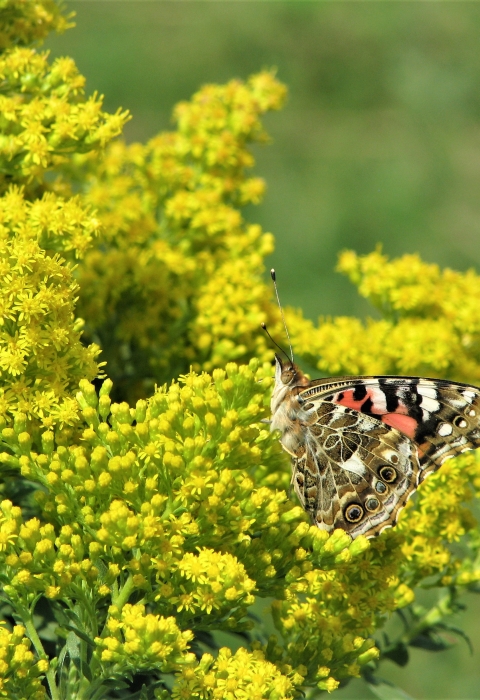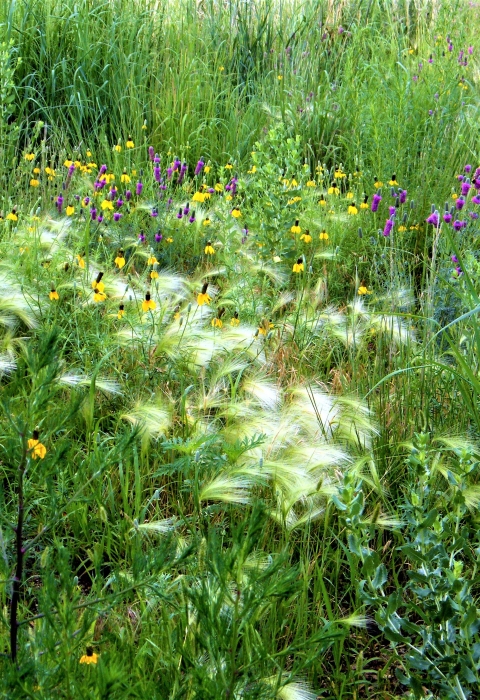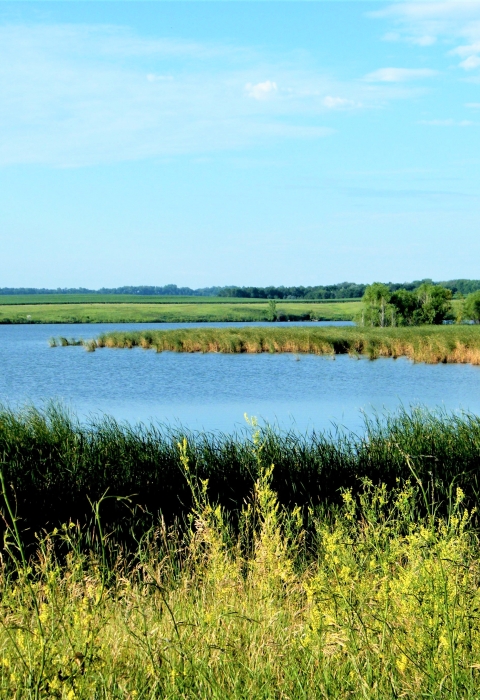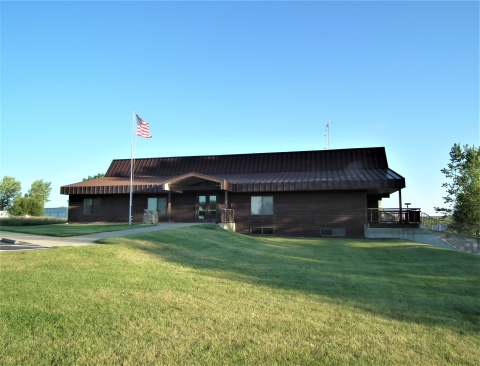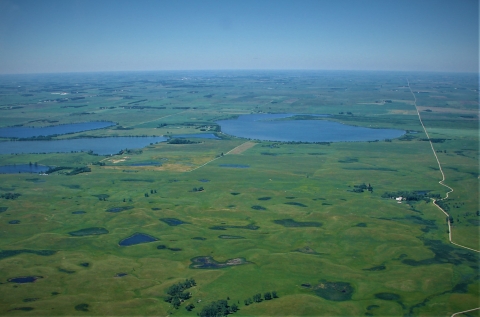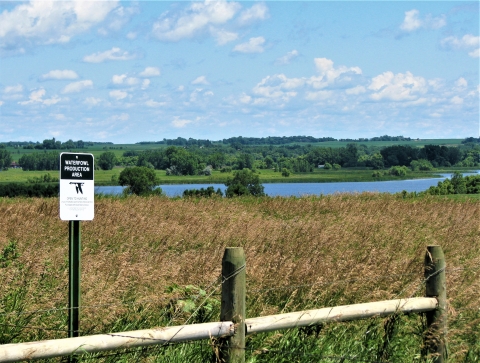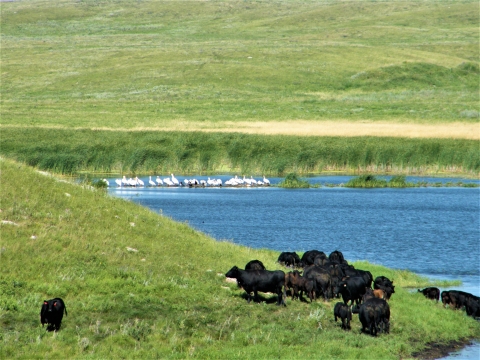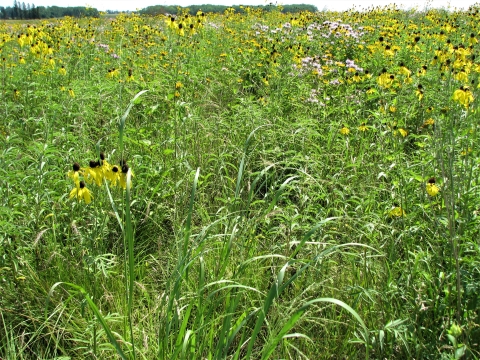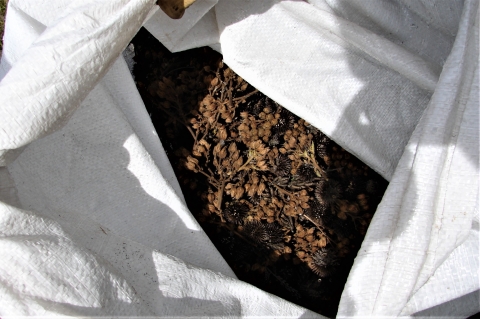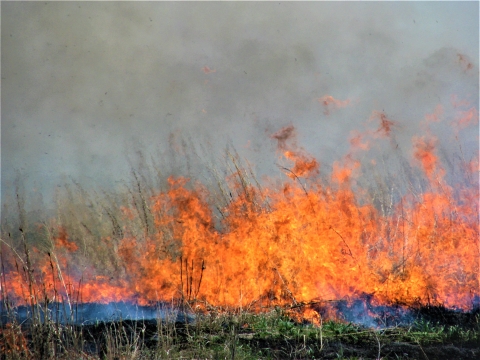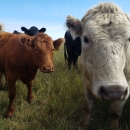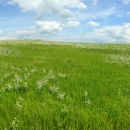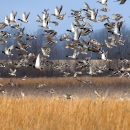Visit Us
We welcome you to visit the waterfowl production areas that are part of Madison Wetland Management District. These areas are open to hunting, trapping, wildlife watching, and photography.
In addition, our visitor center is open Monday - Friday, 8:00 am - 4:30 pm, except Federal Holidays. The headquarters and visitor center is located 2 miles east of the town of Madison, South Dakota and 3/4 miles south of the junction of Highway 34 and Highway 19. Inside the visitor center you can view framed prints donated by nine local South Dakota artists, and observe the fur, skull, track, and scat displays. You can also look for birds using a spotting scope set up on the observation deck.
Location and Contact Information
About Us
Wetland management districts are little known but important components of the National Wildlife Refuge System. Within each District, small parcels of land called waterfowl production areas are purchased and managed by the U.S. Fish and Wildlife Service to provide nesting habitat for waterfowl (ducks, geese, and swans). Waterfowl production areas are concentrated where the ducks are - in the Prairie Pothole Region of the northern Great Plains. Today, there are about 34,000 tracts protected as waterfowl production areas in the country.
McCarlson Waterfowl Production Areas, located in Day County, was the first waterfowl production area waterfowl production area
Waterfowl production areas are small natural wetlands and grasslands within the National Wildlife Refuge System that provide breeding, resting and nesting habitat for millions of waterfowl, shorebirds, grassland birds and other wildlife. Virtually all waterfowl production areas are in the Prairie Pothole Region states of Iowa, Minnesota, Montana, North Dakota and South Dakota.
Learn more about waterfowl production area . It was purchased in 1959. Since then, over 38,000 acres have been purchased in the Madison Wetland Management District for ducks and other wildlife. Funds to purchase waterfowl production areas, come from the sale of Migratory Bird Hunting and Conservation Stamps, also known as Duck Stamps. Hunters over the age of 16 are required to purchase a stamp prior to hunting waterfowl. Nationwide, nearly 5 million acres of habitat have been protected with funds from Duck Stamp sales. These areas are open to hunting as well as other wildlife activities like birdwatching, trapping, and photography.
In South Dakota, half of our wetlands and about 35% of grasslands have been lost to development and agriculture, and this loss continues. In the past decade, more than 15,000 wetland acres per year have been drained in the state. In addition, over 1 million acres of grass were plowed up in the western corn belt from 2006-2011. In South Dakota alone, 27,000 acres of native prairie were converted to cropland in 2011-2012.
Conservation easements are another way to protect these vital habitats. The District includes wetland and grassland habitats protected through various private land easement programs. These easements are an effective way to preserve these vital habitats for wildlife and future generations of landowners, hunters, birdwatchers, anglers, and anyone that relies on our natural resources for the beauty, recreation, and ecosystem services they provide.
What We Do
Resource Management & Conservation
Madison Wetland Management District sits at the western edge of the Tallgrass Prairie Region, the most threatened ecosystem in North America. Because agriculture and land development have changed the landscape, District staff use a variety of management tools to mimic natural processes.
Land Acquisition
The Migratory Bird Hunting and Conservation Act, also known as the Duck Stamp Act, authorizes land purchases with funds from the sale of Federal Duck Stamps to conserve migratory birds, especially waterfowl (ducks, geese, and swans). Under this program, the U.S. Fish and Wildlife Service can both purchase lands and enter into conservation easements with private landowners to protect migratory bird habitat.
Waterfowl Production Areas
Waterfowl production areas are public lands purchased with Federal Duck Stamp dollars. Many waterfowl production areas are small, ranging in size from as little as 10 acres to nearly 2,000 acres. They are often broadly dispersed over many counties in the Prairie Pothole Region. More than 3,000 waterfowl production areas have been purchased since 1958 when Congress authorized the use of Duck Stamp dollars for purchasing small wetlands.
Grazing
Historically, bison roamed the prairies in massive herds, eating and trampling grass and adding nutrients to the soil as they moved through an area. Today, District staff use other grazers, primarily cattle, to help manage grasslands. When used properly, grazing is a useful tool for controlling invasive species invasive species
An invasive species is any plant or animal that has spread or been introduced into a new area where they are, or could, cause harm to the environment, economy, or human, animal, or plant health. Their unwelcome presence can destroy ecosystems and cost millions of dollars.
Learn more about invasive species , reducing dead plant material, and increasing nutrient cycling, all of which improve a stand of grass. Since the U.S. Fish and Wildlife Service doesn't own livestock, we use special use permits with ranchers and they graze their cattle on the land for a set time period. Ranchers benefit by resting some of their pastures and the U.S. Fish and Wildlife Service gets improved habitat for wildlife.
Upland Restoration
Some of the grasslands we manage are native prairie - they have never been plowed up and have many native species. Other grasslands may have been plowed up and planted to crops or tame grasses for pasture or hay. These grasslands may have only one or two species of plants and may be infested by invasive species and weeds. District staff work to restore these areas with native grass and flower species. The easiest way to accomplish this is to plant it with crops for a few years to get a clean seed bed. Ten to fifty grassland species are then planted and nurtured for the next few years. Though this is a far cry from native prairie, these areas provide more diversity and structure structure
Something temporarily or permanently constructed, built, or placed; and constructed of natural or manufactured parts including, but not limited to, a building, shed, cabin, porch, bridge, walkway, stair steps, sign, landing, platform, dock, rack, fence, telecommunication device, antennae, fish cleaning table, satellite dish/mount, or well head.
Learn more about structure for wildlife habitat than unrestored lands.
Grasslands definitely benefit from management that removes the vegetation, but doing it too much or too often is not a good thing. For this reason, managers sometimes use rest as a management tool.
Wetland Restoration
Restoring wetlands is intensive - it involves restoring drained wetlands and natural runoff, reducing siltation and erosion, and re-establishing native vegetation. The U.S. Fish and Wildlife Service also provides assistance to private landowners who wish to restore or enhance their lands for the benefit of wildlife and natural resources. This assistance is provided through the Partners for Fish and Wildlife Program.
Prescribed Burning
Prescribed burning is used to remove dead vegetation, release nutrients back to the soil, decrease woody and other invasive plants, increase warm-season plants, and reduce organic litter on the surface. Most burns occur during April, May, and June. Upland burns at this time set back invading cool-season plants, such as smooth brome and Kentucky bluegrass.
